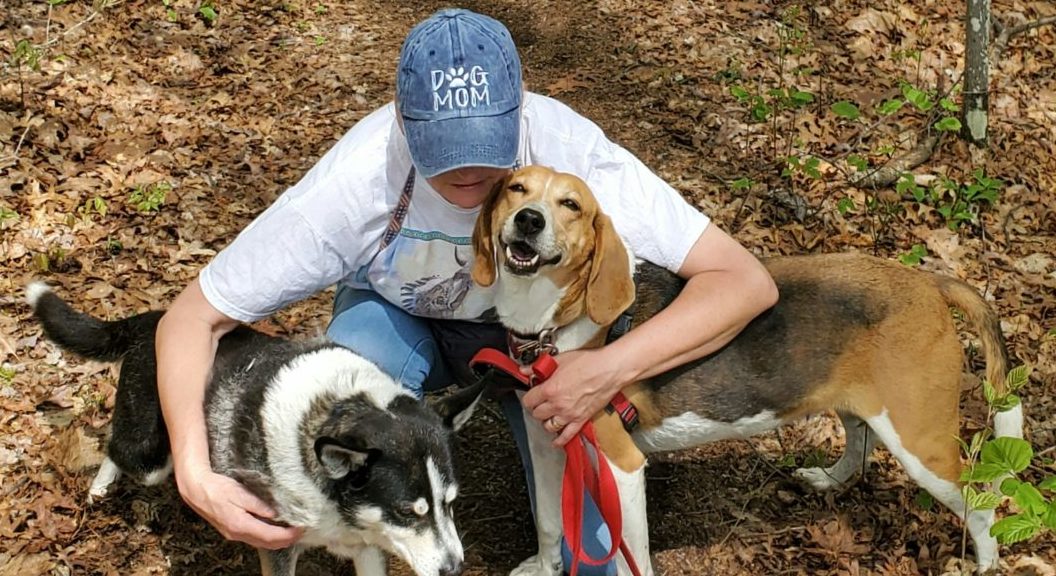This post first appeared on Care2.com
While shelter and rescue groups too often see dogs abandoned by families just because a new baby comes into the house, there are absolutely times when a dog is so stressed that the best and safest solution is to find him a new home. Why do some dogs adjust to new babies while others feel stressed?
“We never know what is going on in the brain of any living being,” said Pia Silvani, director, behavioral rehabilitation for the ASPCA. “It’s not jealousy—dogs do not exhibit jealousy—that’s a human emotion.”
What has happened is that the dog’s immediate social group was once stable and now there is an intruder. Typically, Silvani said, dogs who have difficulty adjusting to babies have not been properly socialized with children and are now forced to live with them. Dogs do not understand the body language of a child and feel threatened. They are looking to their leader, the parent, for help but the parent is paying attention to the intruder and not giving the dog what it needs.

Things get turned upside down and there’s lots of stress in the house, especially when it’s a first baby,” said Silvani, author of “Raising Puppies and Kids Together: A Parent’s Guide.” “Sadly there are times when a dog just doesn’t adjust to the new baby. My heart goes out to families in this situation. They love their dog but are petrified that their baby is going to be injured.”
That’s no way to live and is not a good quality of life for anyone—including the dog, the trainer said. Some families solve the problem by rehoming the dog with grandparents so she is still part of the family. Others are placed into new loving homes.
How can parents tell if their dog poses a threat to the baby?
Deciding whether or not to part with a dog needs to be evaluated on a case by case basis, Silvani said. The questions parents should ask are: Can we keep the child safe? And Is everyone happy, including the dog? “Obviously, if a dog goes out of its way to attack a child, then that is a no-brainer. The child’s presence is a threat, not the child’s actions,” she said.
Seeking the Help of a Trainer Early in Pregnancy Sets the Dog Up for Success
“I get called in all the time to help families who want to prepare the dog for the arrival of their baby,” Silvani said. “It’s one of my favorite things to do, especially when people are willing and ready to do what’s needed to prepare the dog.”
 Including the dog in family activities will help the dog make a positive association with the baby.
Including the dog in family activities will help the dog make a positive association with the baby.
That includes changing the family’s lifestyle ahead of the new arrival. For example, some of the dog’s privileges will likely change when the baby comes home. Parents should start enforcing the new rules early in the pregnancy to give the dog time to adjust. And once the baby arrives, Silvani encourages parents to interact in fun activities with the dog and baby. For example, taking the baby into the yard in a stroller to throw the ball for the dog or including the dog in walks with the baby. This will help the dog make a positive association with the newest family member.
Silvani advises her pregnant clients to sit down and make a list of the behaviors they will expect from their dogs once the baby arrives. Here are some things to consider:
-
- If you are breastfeeding on the sofa, is it a problem if the dog is going to be near you? If not, practice breastfeeding with a doll and put the dog in a down or sit/stay at your feet.
- Practice walking the dog alongside a baby carriage. Go through the routine of putting the doll into the carriage so the dog becomes familiar with this routine.
- Think about how your dog rides in the car. If he’s loose this will no longer be safe when you have a baby in a car seat. Get the dog used to riding either with a seatbelt or in a crate.
- If the dog sleeps on the bed now, will you be okay with that once the baby arrives? If not, start teaching the dog the new rules now.
- Will the dog be allowed access to the nursery? Dogs can be mischievous and will likely try to get into the diaper pail or jump on the changing table. Consider using a doggy gate to keep the baby’s room off limits.
- You’ll need to teach the dog – especially small dogs – that your lap is off limits when you are holding the baby. Practice this while holding the doll. Talk to the dog in a pleasant tone of voice and redirect him to a comfortable dog bed beside you. The dog needs to learn that he is only allowed on your lap when invited.
- Barking can be a real problem if you have a baby that doesn’t sleep well and sleep-deprived parents. If you have a dog that barks at the TV, at passersby or when the doorbell rings, get that under control before the baby arrives.
The ASPCA is a great source for information on helping the baby and dog to get along.
Photo Credit: Thinkstock
